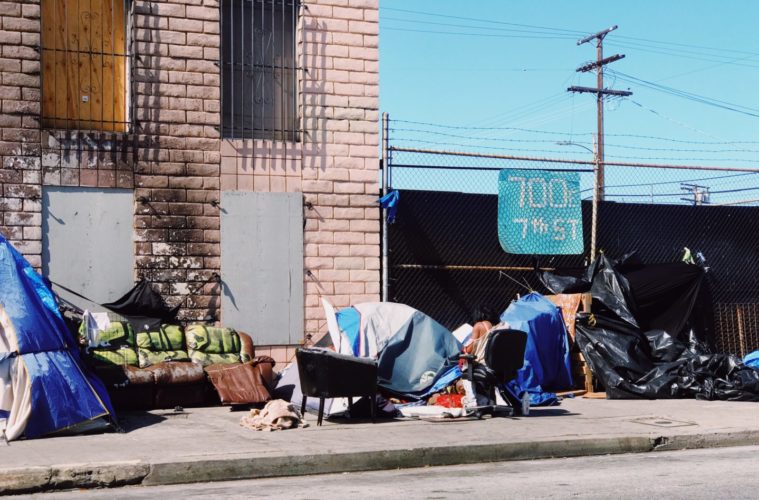Los Angeles County saw a 12.7 percent increase in homelessness, for a total of 66,433 unhoused Angelenos.
The Los Angeles Homeless Services Authority said Friday the data “captures a picture of homelessness in Los Angeles County as it was in January 2020,” meaning these numbers are not current to the COVID-19 pandemic.
The city of Los Angeles itself saw a 14.2 percent increase in a year’s time, with 41,290 total homeless Angelenos at the start of the year.
The 2020 Greater LA Homeless Count results are out today. Here are some of the main takeaways.
Learn more about the count and what the numbers mean at https://t.co/1F0UVYPgqi#homelesscount #homelesscountLA #homelesscount2020 pic.twitter.com/CqJRw0eg05
— LA Homeless Services Authority (@LAHomeless) June 12, 2020
The January threshold also doesn’t capture the effects of COVID-19 homelessness measures — such as Project Roomkey, where 4,056 people were sheltered amid the pandemic, and Parks and Rec shelters, where an additional 1,708 were sheltered.
Mayor Eric Garcetti spoke on the city’s homelessness issue Friday, saying “our homelessness crisis persists and is caused by so many things, but it’s basically trauma meets high rent.”
Garcetti continued: “When we don’t build enough affordable housing, when people get displaced or moved from communities, combined with the traumas of veterans coming home from war, and women who have experienced violence and young people who have gone through the foster care system. Addiction and mental health have gone undiagnosed and untreated.”
The mayor added that over 23,000 formerly homeless Angelenos have been housed over the year through services offered by the passing of Measure H in 2017. Of those housed in 2018, 88 percent remained sheltered without reverting to a homeless position.
Los Angeles Supervisor Mark Ridley-Thomas spoke on the county’s homelessness issue and brought up that for every 207 people housed, 227 new people became homeless every day.
“In any other region, these numbers would have ended homelessness,” Ridley-Thomas said. “But with COVID-19, rising unemployment and a depressed economy, things will likely get worse before they get better.”
Los Angeles is expected to spend nearly $430 million on homelessness in 2020, according to Mayor Garcetti. Garcetti added that 30 percent of the homeless population has been housed, as opposed to 25 percent in 2018.
“Even with the significant gains made in placing people into housing with services, it is not keeping pace with those Angelenos falling into homelessness,” LAHSA Commissioner Jacqueline Waggoner said.“That requires us to increase our housing supply… and it requires us to center solutions in racial equity so that we can dismantle the legacy of racism that still shapes our region’s vast inequalities of income, wealth and opportunity.”
Advertising disclosure: We may receive compensation for some of the links in our stories. Thank you for supporting LA Weekly and our advertisers.

